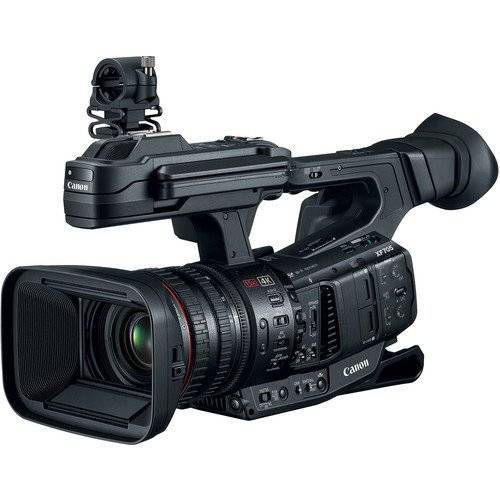Video Cameras and Their Special Uses

Whether you want to buy a video camera to record a family vacation or you just want to document your daily routines, there are several things to consider. Read on to learn about some of the most common types of video cameras, their special uses, and the differences between them.
CCD imagers
Several improvements have been developed to improve the quality and efficiency of CCD imagers for video cameras. These include improved cropping, storage template, and recording means.
One improvement is the ability to invert recorded images. This can be achieved in the recording process or during playback. This is done by warping images to separate distorted triple pentagons into standard pentagon shapes. Using compressed storage techniques, dodecahedron images can be distributed more efficiently.
Another improvement is the ability to compare pentagonal images. This allows the use of a variety of optical components for recording and display. This feature is particularly useful for image comparison, which is the goal of the present invention.
Using one-frame increments for distance has long been a problem in the security cameras art. The present invention solves this problem. The rate of movement of the camera array is used to determine one-frame increments of distance.
Another improvement is the inclusion of a pause control. This is useful for when the person taking the picture would like to avoid a shot. In addition, the present invention incorporates the most common double pentagon format variations, and allows the camera module to be adjusted to various degrees of rotation.
The camera module can be included in an external covering, allowing the cameraperson to see the reflection of the final picture in the cover. The lens hood may be removed depending on lighting conditions.
CMOS imagers
CMOS imagers for video cameras have come a long way in the past few years. They are more efficient, produce comparable quality images, and use less power. They are also cheaper to manufacture. These advantages are why the security industry has embraced CMOS technology.
The main advantage of CMOS imagers is their ability to perform camera functions on-chip. This reduces the amount of off-chip circuitry and enables smaller, more powerful, and more affordable cameras. These devices also provide greater sensitivity and faster image readouts.
CMOS imagers also feature on-chip features, such as image compression and anti-jitter. These on-chip features help reduce power consumption and make batteries last longer.
Another advantage of CMOS imagers for video cameras is the ability to switch between still and video modes. These devices can also be tethered to a PC, allowing them to be used for video conferencing.
These imagers also feature window-of-interest readouts, which are useful for motion-detection and image compression. They are also smaller than CCD imagers.
A CMOS sensor contains hundreds of thousands of pixels. Every pixel on the sensor is read simultaneously. This allows CMOS sensors to produce images with lower noise than CCD sensors. However, CMOS sensors do suffer from partial exposure, smear, and wobble.
A CMOS sensor also has a smaller effective imaging area, which means that more light is needed to produce a clear image. These sensors are also larger and yield a greater field of view.
Gamma correction
Originally conceived to correct the non-linear performance of CRT display devices, gamma correction is now everywhere. It is built into the basic logic of video processing and is included on DVDs and Blu-ray discs.
The gamma “curve” is defined based on known performance of CRT’s. It is applied to the video signal at the camera during recording to compensate for non-linear performance of display devices.
The gamma “curve” exerts great influence on image characteristics. It is one of the most important functions.
Gamma corrections are available on almost all video cameras. This function controls the overall brightness of an image. It also modifies the red, green, and blue ratios. It syncs with human perceptual biases on brightness.
It’s been around for a while. It was invented before 1940. It is used in almost every digital camera and video camera. It’s also included in DVDs, Blu-ray discs, and videotapes.
Despite its usefulness, it’s important to be careful when interpreting the gamma value. The standard gamma value for most video cameras is 0.45. However, used cameras may provide gamma correction values that are different.
It’s important to remember that the gamma function is actually a combination of several parts. This includes an encoding value, an inverse gamma function, and a display gamma function. Each of these must be interpreted correctly.
The inverse gamma function is commonly provided by a LUT. It’s a useful tool for improving contrast on video displays that suffer from low contrast.
Frame rate
Keeping tabs on the frame rate of your video camera is the first order of business. A lower rate may result in the data being moved in bursts and less is more. Alternatively, a higher rate may result in a sluggish processing system. The best way to determine which is the best is to take a hands on approach. A test bed can be setup by enlisting the help of a few tinkerers.
The aforementioned test bed was equipped with a plethora of video cameras ranging in size from a diminutive one megapixel model to a terabyte array. The test bed also featured a host of other features. During the course of the test bed’s lifespan, the testers were kept occupied at a rate of about seventy to eighty per cent of the time. For this particular study, the testers were largely composed of engineering and computer science students.
The one notable exception was a nascent student who was more than a little bit sceptical about the state of the art. A few weeks and several tinkering sessions later, the tester’s skepticism was put to rest. After a few more tinkering sessions, the test bed’s most neophyte member was well on his way to a venerable tenure. The best part is, he was in no particular hurry to make a good first impression. This was a welcome change to his otherwise unruly state of mind.
Recording method
During the late 19th century, video cameras were developed to record motion pictures. Video recording methods are used in other domains as well.
The most basic video camera works by recording light from the visible spectrum. These images are then converted into electrical signals. The video captured is then reconstructed on a detector circuit.
Video recording methods can range from small handheld cameras hooked to a wall or desk to high-end film video cameras with a rotary shutter. Traditionally, videos were recorded on film stocks, but now digital cameras do not require film to capture images.
The most effective video recording method is usually the one that best suits your research. For example, a study of patients in a primary care clinic could be best suited by a camera capturing images from several small cameras. The images can then be viewed by the researcher later.
A digital camera with an electronic shutter also has the potential to record video faster than a traditional camera. It also allows for remote automation, and the camera’s angle can be adjusted by using a remote control.
A camera’s resolution can be an important factor in video quality. The video recording method can also affect bandwidth, storage space and frame rates. A high resolution video can also allow you to view more than one image at a time.
In general, a monochrome video capture will produce a better quality image than a color one. This is because a monochrome image sensor can more accurately measure the grayscale of an object.
Special uses
Whether you’re looking for a security camera for your home or for your business, or you need to record a live sports game, or you’re just looking for a device to capture and share videos from your computer, there are a wide variety of special uses for video cameras. A video camera is a device that captures images and videos, and stores them on an external memory card. Some video cameras include sound recording units as well.
Special uses for video cameras include video astronomy, robotics research, artificial intelligence, medical applications, and video surveillance. They also may be used for timed sporting events or timed X-ray photography.
High-speed cameras record images at a rate of more than 1000 frames per second. This allows for slow motion analysis of fleeting details, and is particularly useful for scientific study.
Special uses for video cameras include remote machine monitoring, and overnight surveillance. These cameras have high photon sensitivity and are usually designed to record in low light conditions.
Some video cameras are designed to have a zoom feature. These cameras allow the operator to focus on the object being recorded and adjust the lens iris. Others are designed to operate without operator input. Some are designed with optional mounting features that allow side-to-side controllable motion.
Video cameras are also used in industrial applications, such as for color mark recognition or flaw detection. These cameras are often hardened for use in a hostile environment. They may also provide resistance to mechanical vibration or be placed in an industrial housing.





